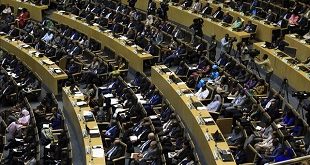
By John Njoroge
Can it succeed where others failed?
The Independent’s John Njoroge spoke to Anne Mugisha, FDC’s Deputy Secretary International and Regional Affairs.

Putting into consideration the Jan.18 anti-Electoral Commission demo, how and why have demonstrations evolved over the years?
There have been different types of non-violence action in Uganda and in most cases demonstrations were unrestricted because they were a harmless ways for activists and aggrieved persons to vent their frustration. In more recent years demonstrations have changed their configuration to large numbers of diverse individuals who come together to express their outrage at a political development. One significant change has been that instead of having one uniform segment of the population like Makerere students or women activists, participating in organized demonstrations; an explosive mix of unemployed youth, students, political activists, and government agents join the processions and chaos usually follows .
Each of these groups have their own agenda. Activists are genuinely trying to draw attention to their cause, victims are venting their frustration, lumpens are looking for some excitement to detract from their stranded lives; while government agents are there to spark violence in order to justify brutal police intervention. When government realized that brutality was not enough to stop opposition from demonstrating after they tried Kiboko, tear gas, and killing a few of them; the state decided to tighten the laws and we now have very restrictive legislations relating to holding peaceful non-violent activities. In response political activists have become more innovative in developing strategies for successful demonstrations.
Why are women a special type of protestor?
I do not think they are any more special than men. But like most societies in the civilized world, Ugandans cannot stand the sight of women –who are synonymous with mothers and wives; being treated so harshly and shamefully. A woman’s body is still something that patriarchal societies would like to remain covered. So when a woman is undressed in public the impact, the shame seems to be greater for the whole society than if it were a man, so in that sense you could say women are a challenging group of protestors for Kayihura’s police force.
Do you think better success is achieved when women demonstrate over a given cause?
I do not think that success of Women for Peace is or will continue to be rooted in their gender but rather it will come from their preparations and tactics. They wore uniform T-shirts, they arrived at the venue one by one so they could not be stopped before their arrival – these were brilliant tactics. I think that we should mobilize not only young women but also our grandmothers and daughters to participate in non-violence actions because they all have a stake in having a transparent electoral process. There is nothing wrong with bring along your whole family. I suggested elsewhere that men should demonstrate with their hands tied up with ropes so that when there is chaos it is clear who is igniting that chaos. The most essential requirement for success is that demonstrators are seen to be peaceful so that the aggressor is clearly identified.
What is your take on the way the police reacted to the Women for peace campaign demonstrators?
The Women for Peace demonstration was a unique and successful demonstration. The women were directly challenging an organisation that is at the center of deciding the outcome of elections. While the media reported on the success of the police in foiling the event, I think they understated the success of the demonstration in drawing the attention of the wider public and indeed the international community to the increasingly restricted and hostile environment in which political activists operate in Uganda. It was also successful in identifying the police as the aggressive party in these peaceful actions of civil disobedience.
What does this say about the current status of democracy and freedoms in Uganda?
The Women for Peace were demonstrating for fair and transparent elections under an impartial Electoral Commission. Freedoms and democracy in Uganda are sinking deeper and deeper into the gutter with this shameless regime. Ugandans are living in a repressive police state. There is neither democracy nor freedom to speak of.
 The Independent Uganda: You get the Truth we Pay the Price
The Independent Uganda: You get the Truth we Pay the Price


